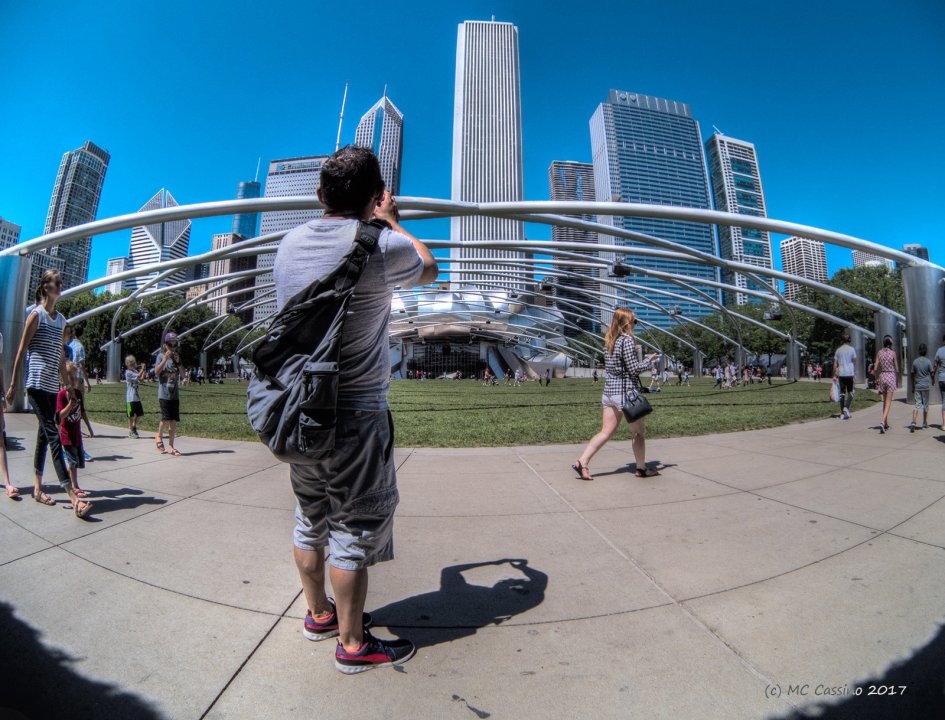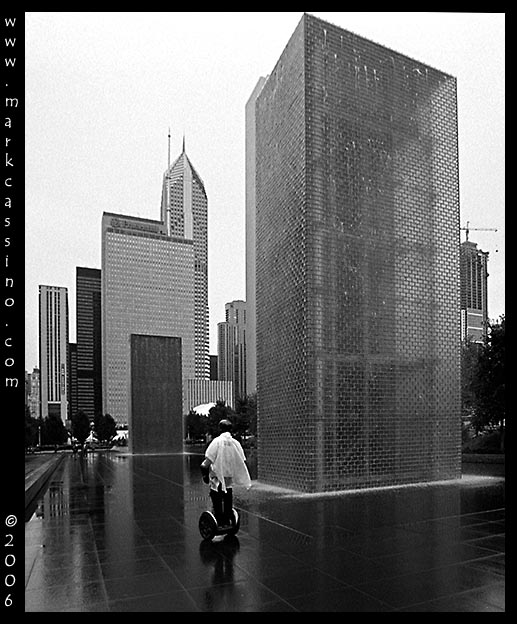Posted by mark on Aug 03 2017 in Street Photography, Chicago
Category: "Street Photography"
- 1
- 2
Posted by mcc on Aug 19 2013 in Announcements, Street Photography, Chicago
Here are snapshots from a Chicago vacation, taken a few weeks ago. I’ve been in a film mood these days and decided to forgo the DSLR and take a film camera (Pentax Mz-S) and lots of film (Tri-X mostly) for this trip. (Technical notes at the end of the post). It was a good plan and I thoroughly enjoyed burning through film and developing it once home.
We spent three nights in Chicago, arriving late afternoon on Wednesday and leaving on Saturday afternoon. Most of these images were taken on Thursday, since Friday and Saturday were devoted to museums. I’ve arranged them in chronological order based on the time of day at which they were taken, more or less.
Click on any image for a larger file.
Morning
Buckingham Fountain
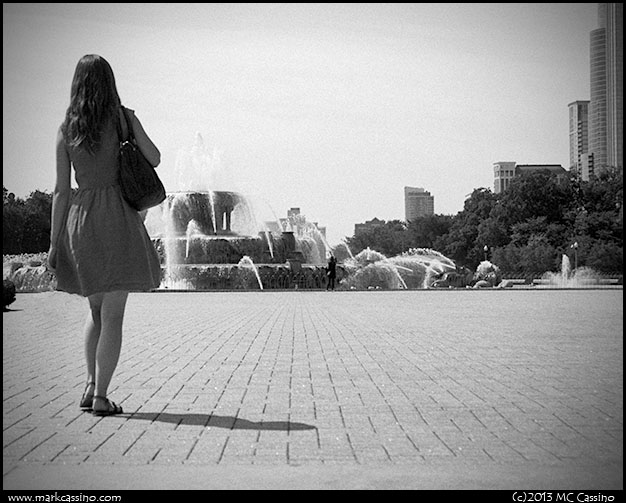
Tall Ships
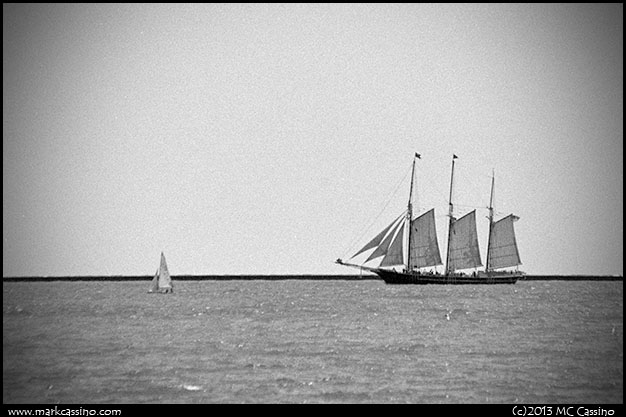
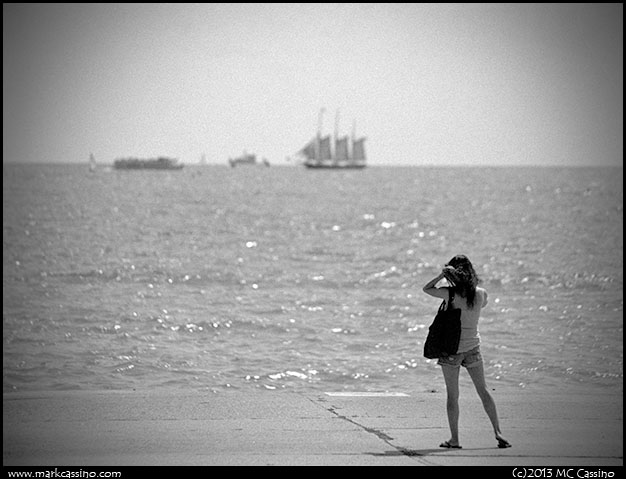
Tall Boats
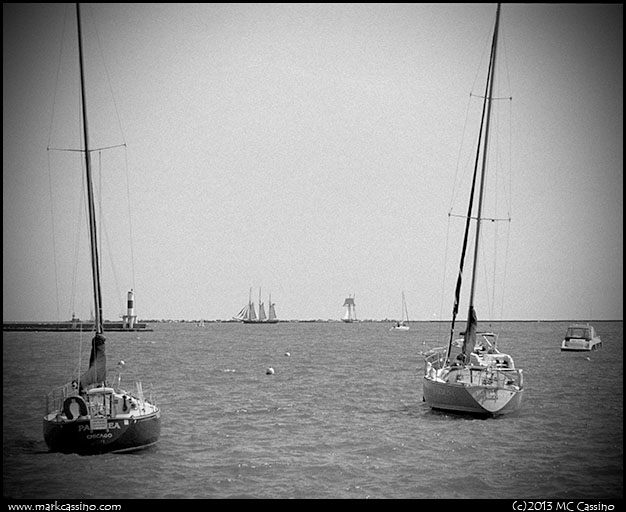
Trees Near the Waterfront
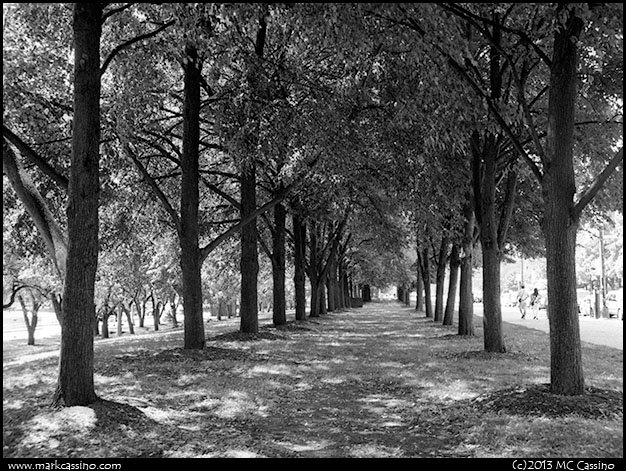
Running
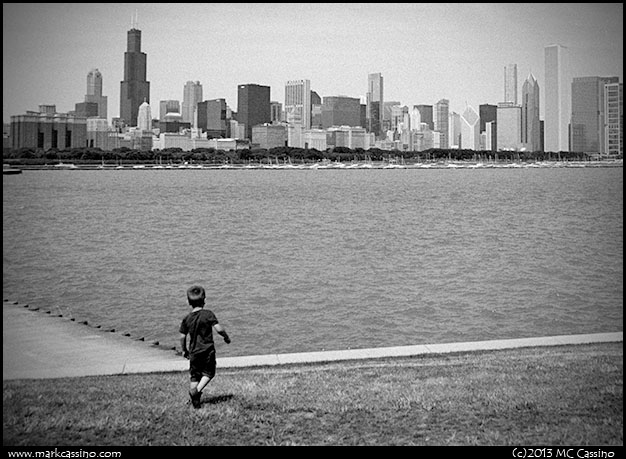
On the Sea Wall
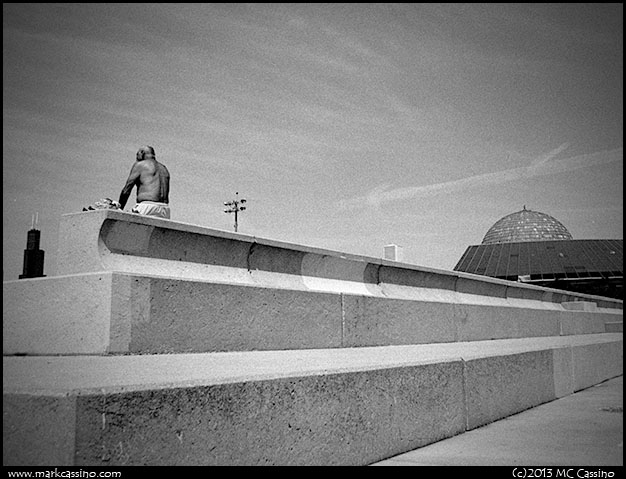
Afternoon
Detail
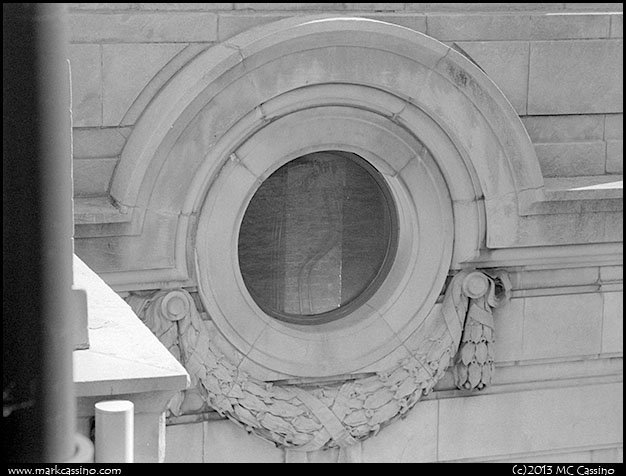
Hanging In Millennium Park
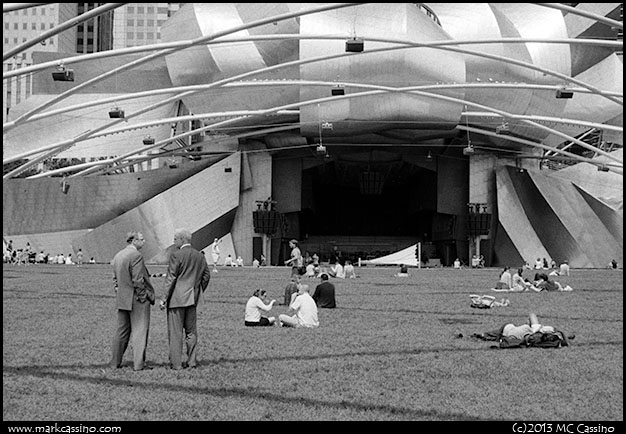
Abundance
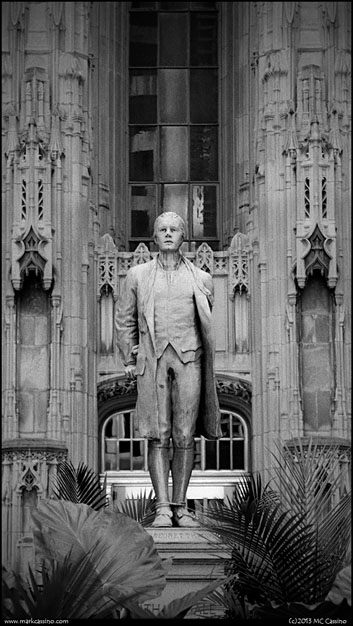
Want
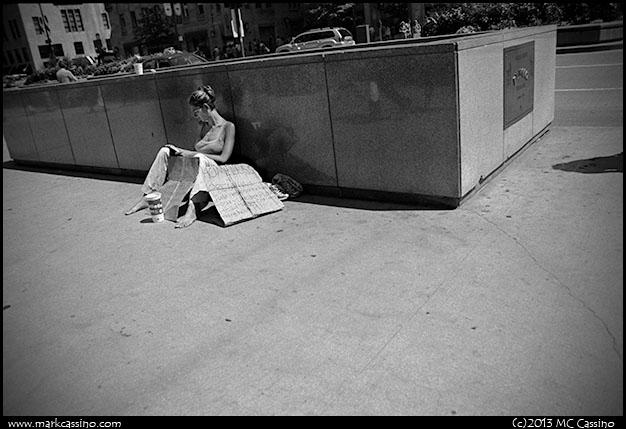
On Navy Pier
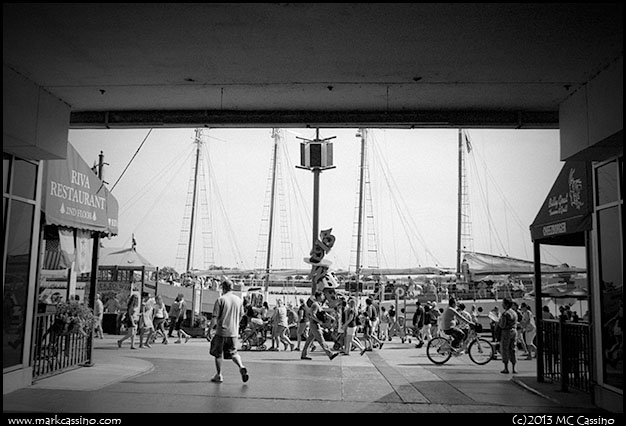
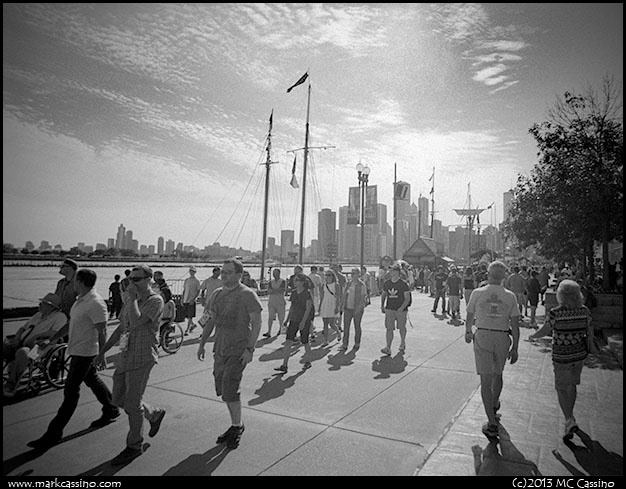
Chicago River
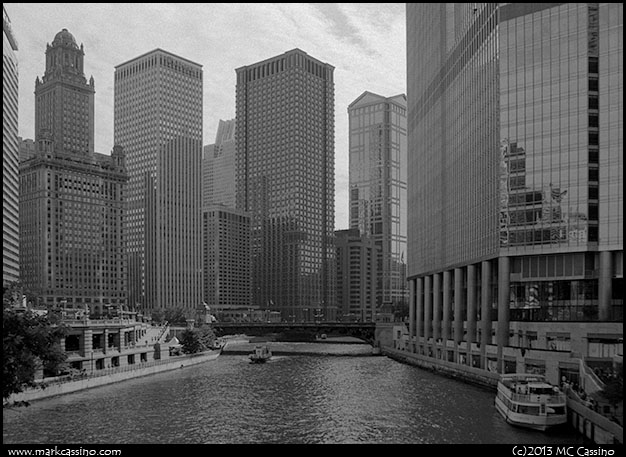
Waiting

Evening
Evening Reflections
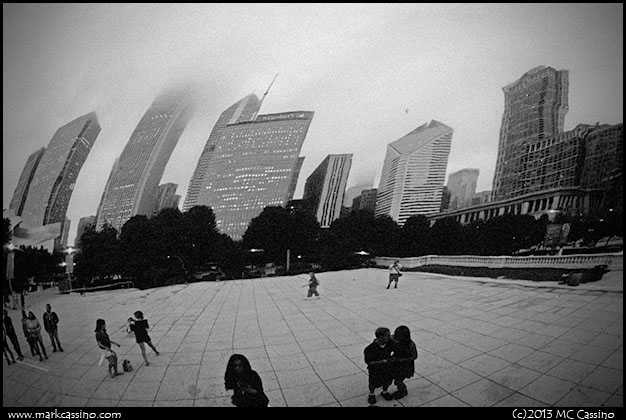
Zombies Prowl
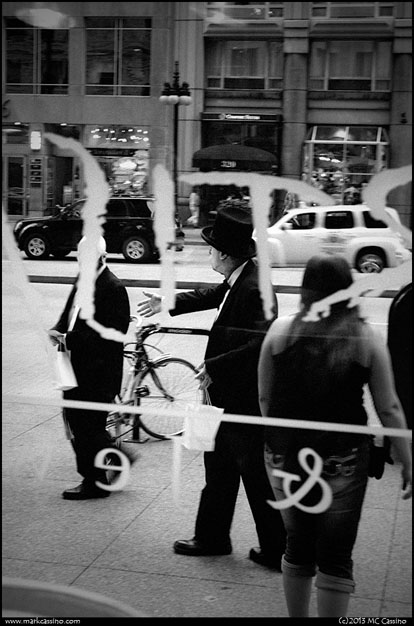
The Orchestra Plays
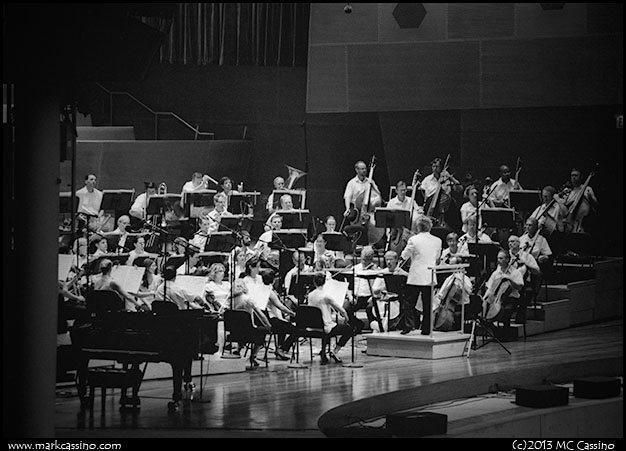
Wrigley Building
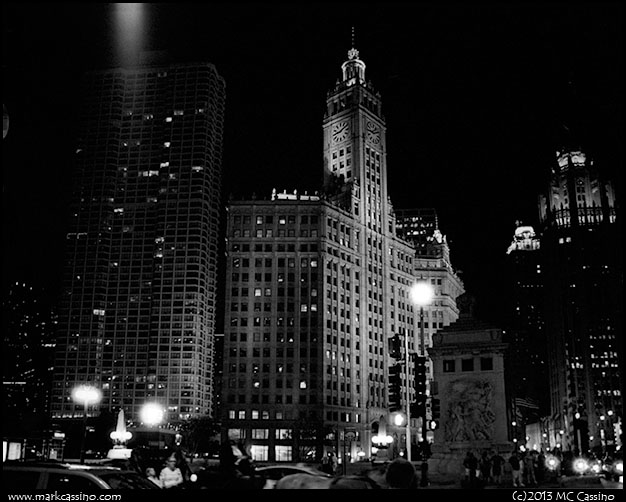
Carbide and Carbon Building
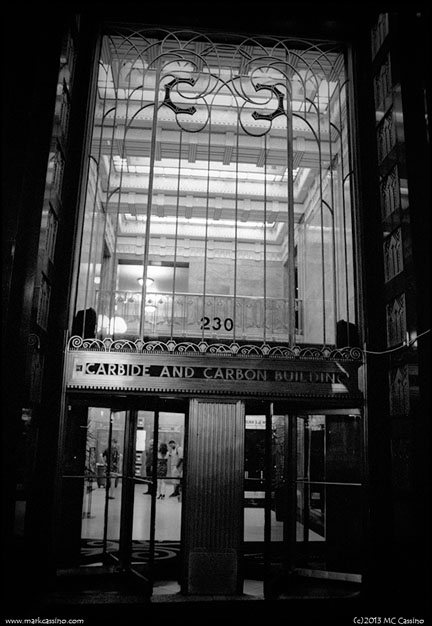
The NBC Building
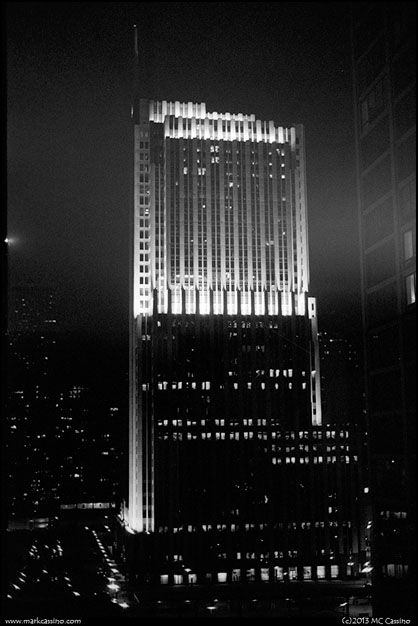
Evening Street Corner
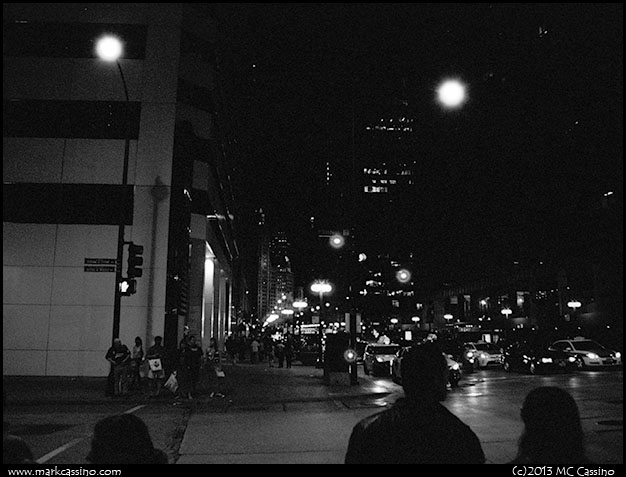
Carriage Ride

Dark Alleys
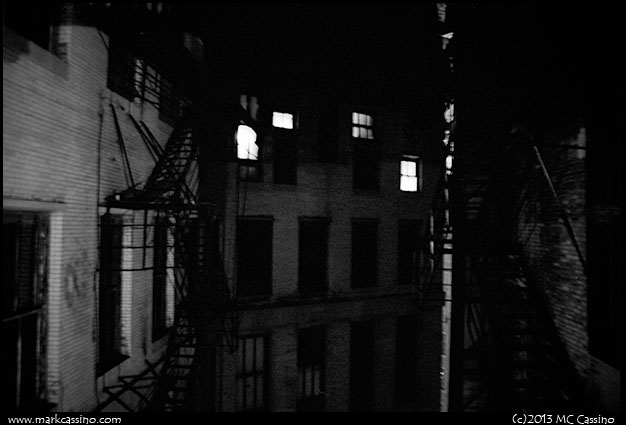
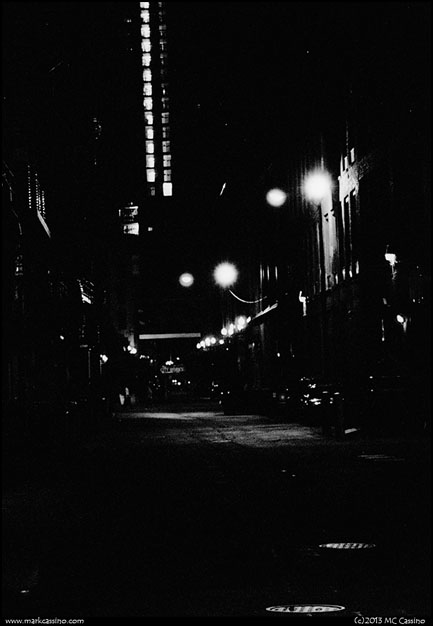
After Evening
Spirits Three
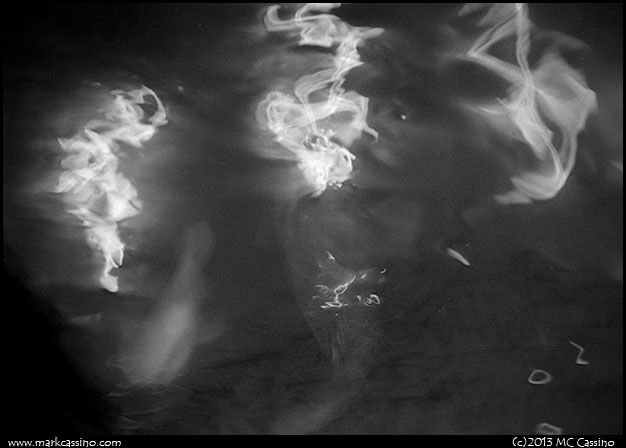
Dreamland
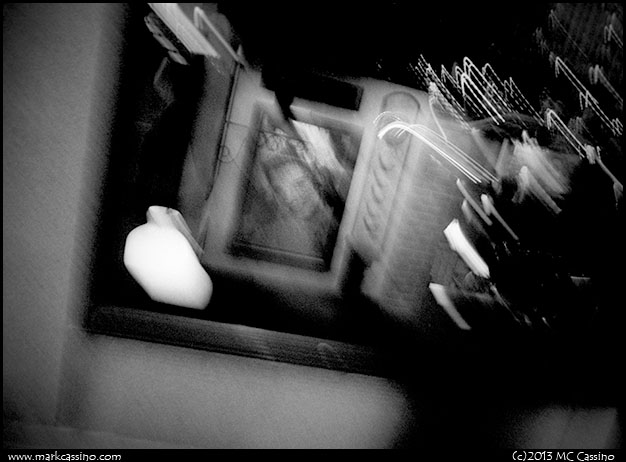
Peace
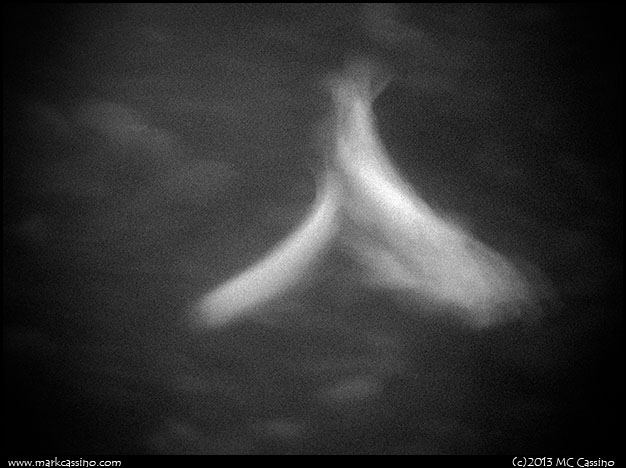
Technical Notes: All photos were taken on Tri-X 400 or on Arista Premium, a film that is quite similar to Tri-X. With a few exceptions, development was either HC110 Dil B for 7.5 minutes (ISO 400) or for 16 minutes(rolls pushed to ISO 1600 for night shots.) I developed the first 4 rolls in HC110 Dil H but was not happy with the additional grain.
Posted by mcc on Jan 01 2013 in Street Photography, Infrared Converted Pentax KD10, Infrared Converted Digital SLR, Travel
I watched the movie Lincoln the other day, and that reminded me that I never got around to processing the infrared photos I took at Lincoln’s tomb last June. So here is one. Click on the image for a larger file.
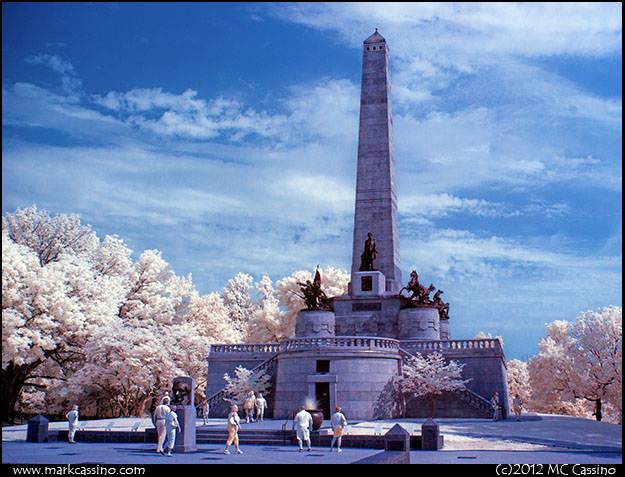
Taken with an infrared converted Pentax K10D and smc PENTAX-DA 18-55mm F3.5-5.6 AL lens.
Posted by mcc on Feb 02 2011 in Toy Camera, Holga, Street Photography
I heard about the London Street Photography Award and that got me looking through of my old B&W scans. This isn’t street photography since I was driving a car when I took it (like, how can you take a street photo while driving in the, um, street…)
But it’s an overlooked shot that I like. It has inspired me to unearth my original Holga from the depths of my car trunk, and I might even develop the film in it and try a fresh roll.
This shot was taken in 2007, whilst driving through Battle Creek, Michigan:
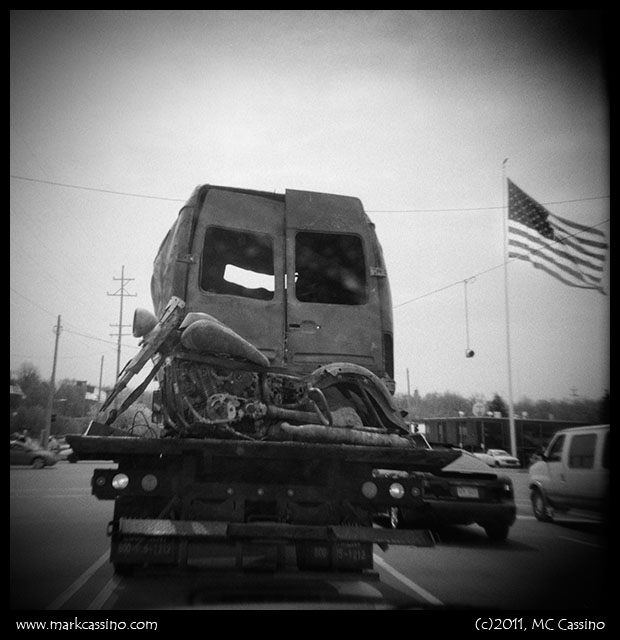
Posted by mcc on Aug 17 2008 in Street Photography, Film Processing, Chicago
Things have been a bit quiet around here lately. I spent the first week of this month in Chicago, enjoying the urban life. It was great trip. Pam and I staying at the Congress Plaza Hotel, right on Michigan Avenue. Highlights included visits to the Art Institute, the Museum of Contemporary Photography, the Museum of Contemporary Art, the Field Museum, and, of course, The Dark Knight at the Imax.
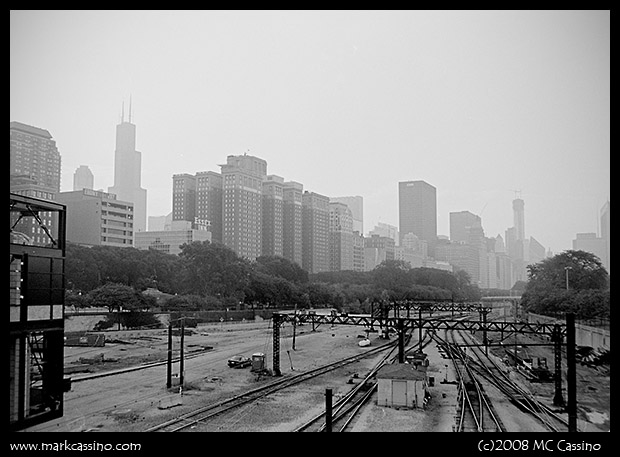
Since vacations are supposed to be an opportunity to get away from old habits, I decided to bring a film camera. I finally used up the last of my Ilford XP2 Super – which was considerably out of date. I also shot over a dozen rolls of Fuji Neopan 400 and Adox CHM 400 film.
The Adox film is re-badged Ilford HP 5+, and used to be sold through J and C Photo. The expiration date on the box was 7/2008 – so shooting it in the first week of August, 2008, was right on time. Remarkably, aside from the XP2 Super and a couple of rolls of Plus-X, all the film I shot on this trip was fresh. I guess I’m still using up 35mm ISO 400 B&W film.
I shot 15 rolls of film during the trip, and have been slowly working my way through developing them. The film workflow is certainly a lot slower than the digital workflow, especially when you are developing it yourself.
For development, I mixed up one of my last bags of Micrdol-X, which I’ve been using at the 1:3 dilution. The development time for the Adox CHM 400 is easy to remember – 22 minutes at 22C. For the Fuji Neopan, I’ve been working with the 15.5 minutes at 22C.
So far, 12 of the 15 rolls shot have been developed, but only a handful of those have been scanned. Did I mention that the film workflow is pretty slow?
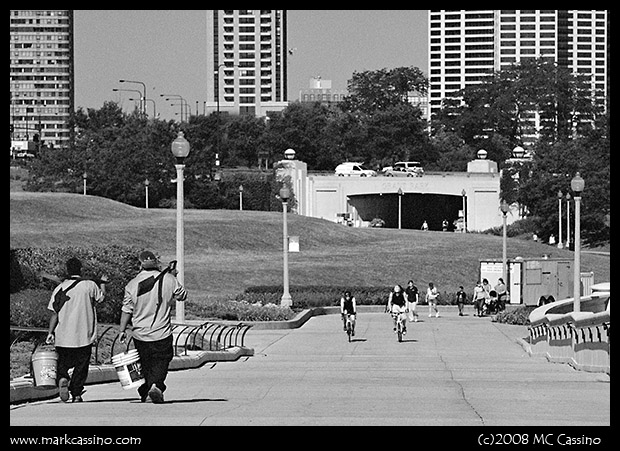
At home, other projects have been keeping me away from blogging. First and foremost, I’m trying hard to re-do this entire website. Really – it’s time for a new look and a structure that makes a little sense. So, I’m trying to hold off on adding to the current site while the new one is in process – so no new images in the Image Stream at this point.
Posted by mcc on Jan 26 2008 in Street Photography, Exhibits
Good news came my way yesterday, with the annoucement of the juror’s selections for Center For Fine Art Photography’s street photography exhibit. This is on the heels of having a couple works selected into the Center’s Macroworld exhibit.
The image that was accepted into the exhibit is “On Patrol” shot at Millennium Park in the fall of 2006. That was my last serious trip to Chicago for some street shooting . I keep meaning to head back for some more, but the few trips I’ve taken have been devoted to other things.
Well – everything in due time. At at least for now, this shot gets its day.
Posted by mcc on Sep 07 2006 in Street Photography, Film Processing
Last weekend I finished developing the film from my recent Chicago trip. I posted on this trip a few days ago, at which time I had developed 4 of the eight rolls of film shot during this two day exercise in urban street photography.
As luck would have it, those first four rolls were clearly the strongest of the shoot. The four remaining rolls were more or less just shots of details from the hotel room, a bunch of way mis-exposed images (not sure what I was doing with those) and a handful of images from the actual street.
Is it a sad state of affairs when a photo of a doorknob is the best you have to offer? If you define the value of a photo based on the content of the subject matter, what good is a picture of a doorknob (no offence to the folks who put together home improvement catalogs.) But judging a photo by the content of its subject is the most superficial of all assessments (and the most widely applied, sadly.) So – here’s a doorknob. Nice hotel room. I was sitting on the commode when I took the shot. It’s the only shot in this lot that I took the time to tone.
And then there was the closet in the hotel room. It was a great full sized closet, and like the rest of the room it had a ceiling way up high – 10 or 11 feet minimum. And there was shelf over my head (and I’m just over 6 feet tall.)
Most intriguing was the light. When I opened the door it was on. And every time I opened the door again it was on. At first I thought that the light was continuously on, and figured that at night the ghostly outline of the doorframe would haunt the room.
Well, I got more Jethro Bodine than Albert Einstein in me – as it turned out the light was hooked up to a button in the doorframe, and like your home refrigerator turned off when the door was closed. But still, that top shelf made a nice place to line up exposed canisters of film, and so at the end of the first full day there I snapped a shot of the four rolls of film exposed thus far.
I had to hold the camera over my head, and obviously could not see what I was shooting except in the mind’s eye.
I think some of those shots could have been the strongest of the series – but an unhappy accident during development ruined things.
I always develop one roll per tank, and I use the ‘double’ sized tanks (that can hand two rolls of 35mm film.), I also always use 600 ml of developer solution. Since a 36 exposure roll of 35mm film has the same surface area as a roll of 120 film (more or less) I reckon this leads to more consistent of results.
Unfortunately, I lost one of the little clips that holds the film spool in place. I used to just put an empty spool in the tank to make sure the spool with film on it didn’t slide out of the developer solution, but I got lazy and stopped doing that, and developed dozens of rolls with the spool unrestrained with no problems.
Until now... This particular roll of film slid on the center tube that runs down the middle of the plastic developer tank, and wound up at the top of tank – right where the developer and air space interface. The result was hard agitation marks in the center part of the roll.
I try to imagine how the developer could make those sprocket marks on the film – and I can ‘t figure it out. After all, the sprockets of the film roll are up in the plastic spool – so how does a perfect image of them get projected onto a few frames, just from the sloshing of Microdol-X in the tank?
Beats me – but then the effect is so bad, it’s almost good (but not quite)....
Posted by mcc on Sep 01 2006 in Street Photography, Chicago
Earlier this week I headed into Chicago, for a little bit of urban R&R. For this trip we decided to stay at the Congress Hotel, a venerable old institution just south of the Art Institute and near Grant Park.
I always look to trips to the city as a means of revitalizing my photography. The stimulation is twofold – first there’s the opportunity for some urban street photography, a real change of pace from the nature and landscape work I usually do. And then there’s the exposure to galleries and museums – a chance to see different approaches not only to photography but also to other visual arts as well.
For this trip, I added a third element and brought along Eddie Ephraums’s book, Darkroom to Digital. I’ve been picking at this an his Creative Elements book for some time, and decided it was time to sit down and actually read it.
It’s been almost a year since my last visit to the city. This trip was much shorter, and much less focused on just photography. Of the flip side, with the exception of the scorpion sting on my right foot, I was not hobbled and felt comfortable walking for hours on end.
So how did the three influences come together?
The verdict is still out on the actual photos I shot during the trip. For me, urban street photography is still solidly in the realm of film – fast traditional silver film, like Tri-X or NeoPan 400. For this trip I shot out the last of my store of Tri-X (the ‘new’ emulsion) and started working on my sizeable horde of NeoPan 400.
Before I left home, I mixed up a gallon of Microdol-X. I really like the look of grainy, 35mm film, developed in Microdol-X 1:3. Although the Microdol is a fine grain developer, at the 1:3 dilution the grain reduction is not as pronounced. What you do get is an even, consistent, and to my eye pleasing graininess that become more pronounced as the miniature 35mm negatives are enlarged.
Unfortunately, the weather did not cooperate for much street shooting, as we moved in and out of one rain storm to another, sometimes just misting, sometimes pouring down.
Ephraums’s book made for a very interesting read. Its refreshing to read a book that discusses the whys of photography, and not just the processes and outputs. Unlike his Creative Elements, the photos in this book moved away from landscapes and towards found object still lifes – which inspired more than a few shots around the hotel room, which had enough historic ambiance to provide some interesting subjects.
While Ephraums’s book was not a technical guide to monochrome digital processing, it did get into some of the techniques that he uses. I’ve been using duotones and tritones to tone my monochrome prints for a few years now, and it was interesting to read about his techniques in this light.
I also found his used of extreme crops in film frames to achieve a certain effect. The photo of the abandoned light station – visible from the carnival setting of Navy Pier – is really inspired by some of his images and techniques.
In regards to inspiration from exhibits and museums, the Art Institute of Chicago had a large scale retrospective on Harry Callahan. Up till now, my exposure to his work was limited to a 1967 Hallmark Calendar of his photos, which I found among my father’s books. The calendar alone was a notable influence when I first looked through it. The photograph of leaves on the ground, simply entitled Chicago, 1950, (it accompanied the month of October in the calendar) was particularly notable, and as I looked it a few years ago my notions about simplicity of composition and a strong center of interest popped like soap bubbles.
One of the most instructive aspects of the exhibit was the inclusion of a couple of negatives on display, along with the final prints. I was amazed at how Callahan achieved his results through high contrast printing. Until now, I’ve been focused on preserving shadow detail, and that has driven my techniques for developing, scanning, and printing. That can result in a wonderful, luminous print. But it can also result in flat images that lack snap. So, in the post-exposure, post-scanning processing for the images from this current trip, I’ve put more attention on punching up the contrast, and to some extent printing down, perhaps sacrificing some luminousity in favor of more punch and snap.
Here are a few more outtakes from this trip:
- 1
- 2
